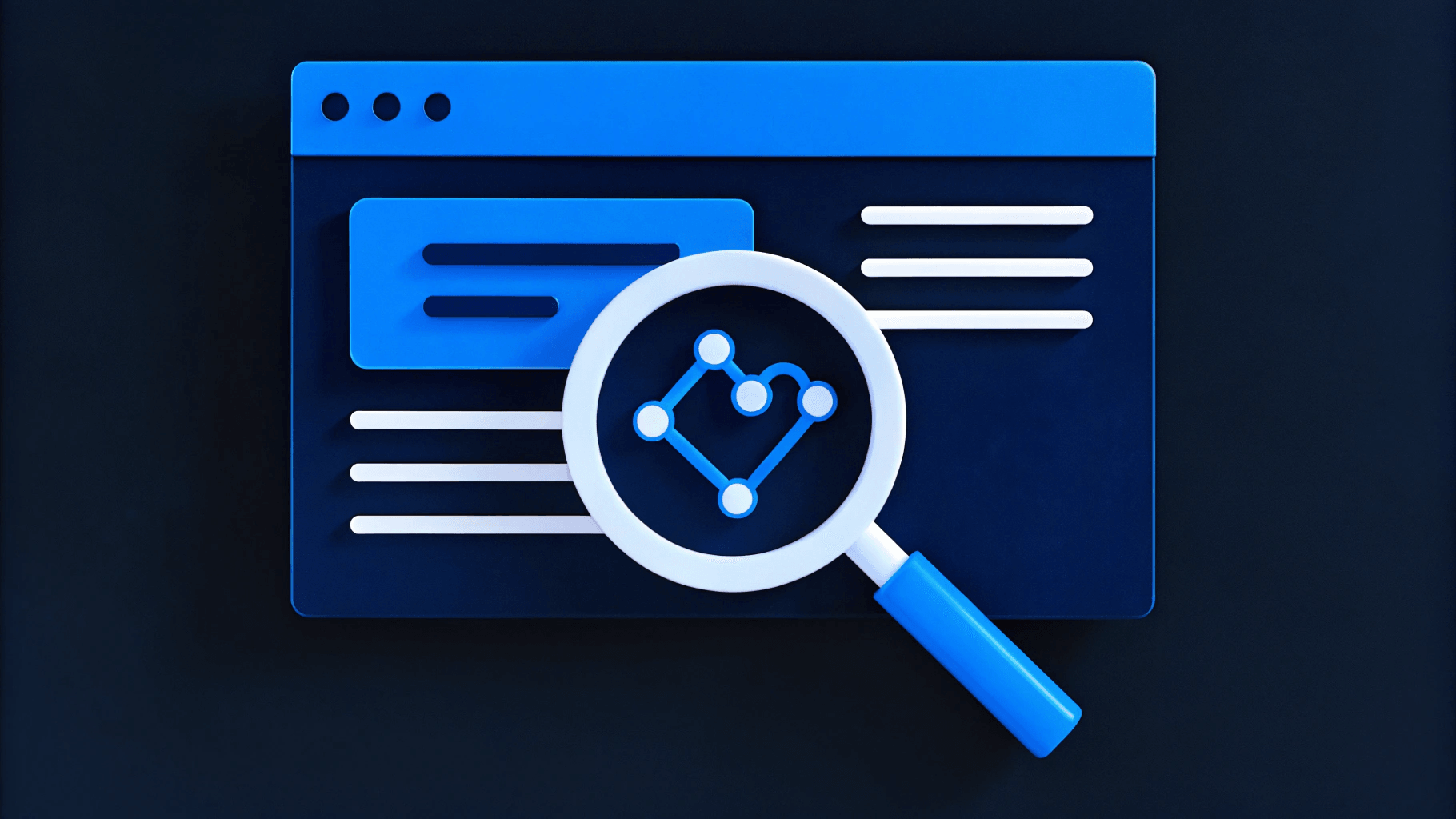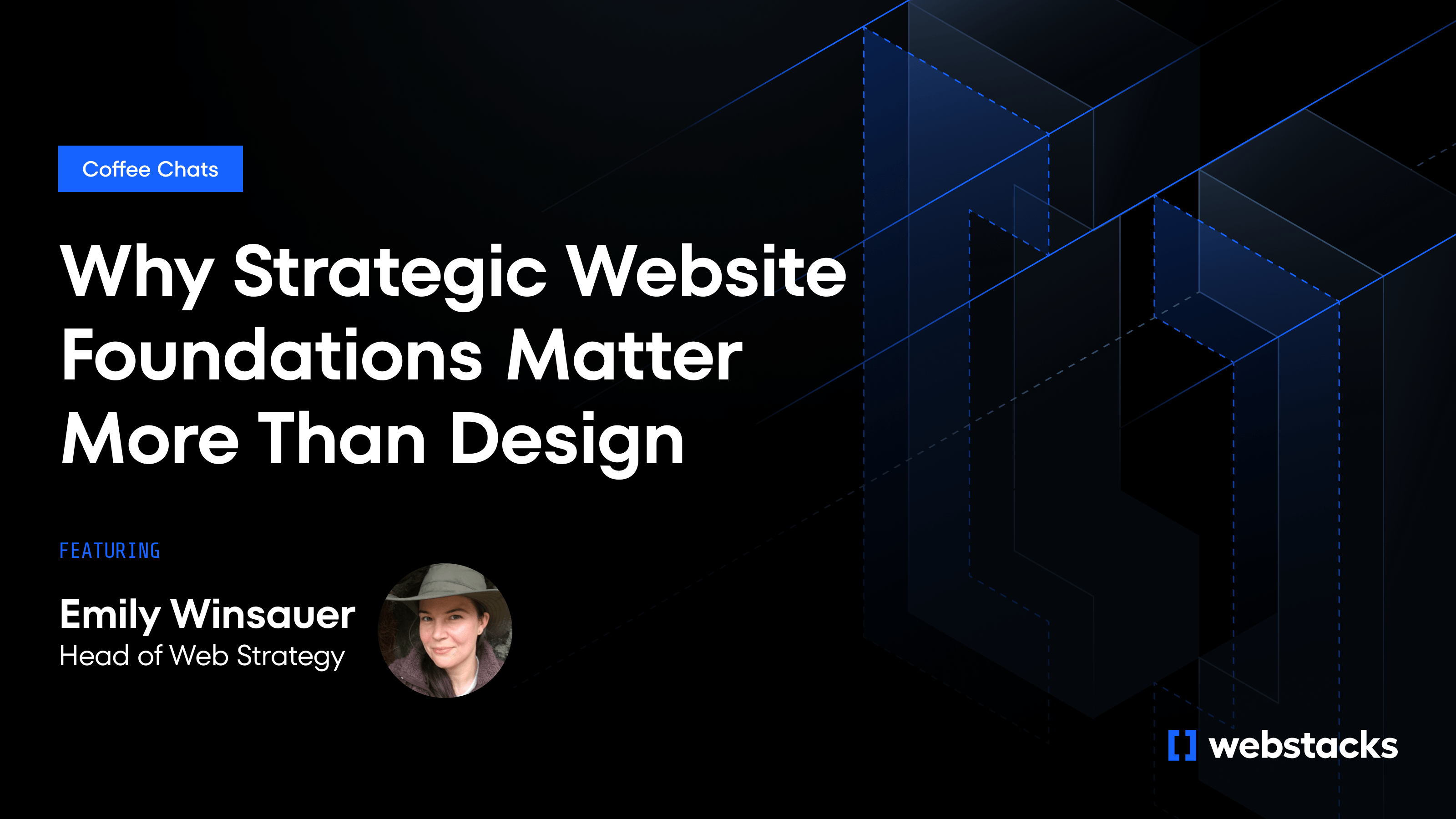Your marketing team discovers a new AI tool. IT evaluates security implications using last quarter's guidelines. Leadership makes budget decisions based on six-month-old strategic assumptions. The result: every team operates from a different version of reality, and your AI initiatives stall in committee while competitors ship.
An adaptable AI strategy playbook prevents this drift. It aligns vision, use cases, data strategy, and change management so decisions stay current as tools, governance, and priorities evolve. Each section updates independently, keeping strategy relevant without constant rewrites.
The playbook functions as both a strategic guide and a practical operating manual, defining how AI decisions get made, measured, and maintained.
Why Continuous Documentation Outperforms Static Planning
Continuous documentation turns your AI strategy from a static plan into an operational system that evolves with your program. This approach consistently outperforms traditional planning cycles because it keeps every stakeholder aligned on current governance, reduces compliance risk, and accelerates decision-making without coordination overhead.
Traditional roadmaps get published, circulated to a small circle and forgotten until the next planning cycle. Content teams publishing generative guidelines in January might find them obsolete by March.
Teams default to informal Slack conversations and undocumented decisions. These informal workarounds create compliance risk. Continuous documentation solves the problem by treating your playbook as a living system rather than a published artifact. Updates happen as your program evolves, not on an arbitrary annual schedule.
The following four advantages demonstrate why continuous documentation consistently outperforms traditional planning cycles across organizations of different sizes and maturity levels.
- Real-time regulatory alignment reduces risk of running outdated or non-compliant workflows. Version-controlled documentation provides auditors with exact timestamps showing when and how policies evolved.
- Cross-departmental coordination improves when marketing, engineering and compliance work from identical policies. Working from the same playbook eliminates "black box" friction between teams.
- Compounding institutional learning happens when you repurpose insights across teams. Companies that embed current strategy into daily operations capture higher ROI because outputs stay aligned with changing business goals.
- Predictable compliance readiness improves when governance sections reflect current standards. Centralized, current documentation helps new hires onboard faster.
These advantages make the business case for continuous documentation clear. The question becomes how to build a playbook that actually delivers them rather than becoming another static artifact that teams ignore.
How to Build Your AI Strategy Playbook in Five Steps
Starting with strategic alignment ensures your playbook serves business objectives rather than becoming a technical exercise disconnected from company goals. Building your playbook requires addressing five distinct documentation needs in sequence. Each step produces a specific deliverable that subsequent steps depend on. You create a foundation that supports both initial implementation and ongoing maintenance. The process takes most organizations between three to six weeks depending on team size and existing documentation maturity.
The five-step process below walks you through defining vision, auditing resources, establishing governance, assigning ownership and implementing maintenance rhythms. Each step includes specific components to document, time investment estimates and practical examples.
Step 1: Define Strategic Vision and Business Alignment
Your charter establishes why your organization is investing in AI and how success will be measured. Without a clear charter, teams make tool decisions based on personal preference rather than business priorities. Scattered investments deliver minimal value.
The charter also serves as the artifact you reference when competing priorities emerge or budget discussions begin. Executive sponsors use the charter to defend resource allocation. Implementers use the charter to justify saying no to requests that fall outside documented scope. A well-crafted charter keeps everyone aligned on goals and prevents scope creep.
Draft a concise charter grounded in revenue, efficiency or customer experience goals. Articulate the 'why' in terms leadership already tracks: ARR, churn, pipeline velocity. Secure an executive sponsor who will champion resources and remove blockers. Your charter should include the four components below, each serving a distinct purpose in aligning stakeholders and maintaining focus throughout implementation.
Charter components:
- Vision statement tied to business outcomes
- 3 to 5 measurable success metrics
- Executive sponsor and budget allocation
- Quarterly milestone targets
This charter becomes your north star for every subsequent decision, from model selection to budget allocation. When stakeholders debate priorities or question direction, the charter provides the shared reference point that keeps your program aligned with business goals rather than drifting toward technical experimentation.
The example below shows how a marketing team might structure their charter. Notice how the vision connects directly to a specific business problem while the success metric provides a clear target that teams can track weekly. Budget allocation includes both pilot investment and scaled funding contingent on proven results.
Example charter:
Vision: Reduce content production time 40% via AI-assisted workflows
Success metric: 5 published AI-enhanced assets per week by Q3
Owner: VP of Marketing
Budget: $50K pilot, $200K annual if KPIs hit
Time investment: 2 to 4 hours of stakeholder workshops plus 2 hours documentation.
Step 2: Audit Current State and Identify Gaps
Your charter defines where you're going. The audit defines where you're starting from and what obstacles stand between current state and desired outcomes. Many organizations discover they're further behind or further ahead than assumed. These discoveries fundamentally reshape implementation timelines and resource requirements.
Audits keep teams from designing for capabilities they don’t yet have. Mapping what exists creates a realistic foundation for planning. Documenting gaps prevents surprises during implementation. This inventory becomes your baseline for measuring progress and the reality check that prevents overcommitting to timelines your organization cannot support.
Map existing data assets, infrastructure capabilities and team skills. Document what you have, what's missing and what requires investment. Organize findings to make gaps and priorities immediately visible. A simple matrix format works well for most organizations. The four audit dimensions below cover the resources that matter most for AI implementation success.
- Data inventory: What's labeled, accessible and sensitive
- Infrastructure capacity: Can current systems handle AI workloads
- Team capabilities: Prompt engineering skills, governance understanding
- Existing tools: What's deployed, what needs procurement
This inventory reveals what you can build on immediately and what requires investment, giving you the clarity to shape realistic implementation timelines and avoid over-committing to workflows your infrastructure can't support.
Document findings in a matrix with five columns: Resource, Current State, Gap, Priority and Investment Required. The completed matrix gives leadership a clear view of readiness and helps you sequence implementation steps based on what's already in place versus what requires build-out. This visualization makes it immediately obvious which gaps block progress and which represent lower-priority improvements that can wait.
Time investment: 4 to 6 hours of cross-functional interviews and system audits.
Step 3: Establish Governance Rules and Ethical Guardrails
Without clear governance, teams either move too slowly, waiting for permission or move recklessly without understanding compliance boundaries. Governance defines boundaries within which teams can experiment safely. Without clear rules, either nothing gets done because every decision requires executive approval, or everything gets done because no one knows what requires approval. Both scenarios create risk.
Strong governance frameworks specify exactly who can make which decisions with which tools and data. Clear boundaries eliminate ambiguity while preserving momentum. Rules protect your organization from compliance violations. They also protect innovators from second-guessing whether their work will be approved. Well-designed governance creates confidence rather than constraint.
Define who can do what with which tools and data. Codify approval workflows, escalation paths and ethical obligations. Document rules in plain language that non-technical stakeholders can interpret without legal consultation. The framework should function as a practical reference, not a policy memo. Teams should be able to answer most governance questions by consulting the playbook rather than scheduling meetings. The five governance components below create a complete framework that balances safety with speed.
Governance framework:
- Access tiers: Basic users, power users, administrators
- Tool approval criteria: Security, privacy, cost thresholds
- Data classification rules: Public, internal, confidential, restricted
- Escalation procedures: When to flag issues and to whom
- Ethics requirements: Bias review, transparency, privacy obligations
These five components work together to make governance enforceable rather than theoretical, giving teams clear protocols for daily decisions instead of abstract principles they can't operationalize.
The example policy below demonstrates the level of specificity needed for effective governance. Users know exactly what they can do, what requires additional approval and what guardrails apply. Notice how the policy specifies both permissions and constraints in a single statement that anyone on the team can understand and apply without consulting legal or compliance teams.
Example policy:
Basic users may use ChatGPT Enterprise for drafting with public data. Power users may connect proprietary data to approved Retrieval-Augmented Generation (RAG) systems after completing bias training. All outputs require human review before publication.
Clear policies like the example above prevent bottlenecks while maintaining compliance; teams move quickly because boundaries are explicit, and compliance teams stay confident because rules address their core concerns. Leadership can audit adherence because policies are documented and measurable.
Time investment: 6 to 8 hours for initial draft, updated as tools change.
Step 4: Assign Ownership and Organizational Structure
Documentation without ownership decays immediately. Someone must be accountable for keeping the playbook current, resolving conflicts between departments and ensuring updates actually get implemented rather than sitting in draft status indefinitely. The DRI model works by giving one person clear ownership while department advocates share feedback and flag needed changes.
One person ensures consistency and maintains quality standards. Multiple advocates prevent that person from becoming a bottleneck. Advocates surface issues from their respective departments before problems escalate.
Appoint a DRI for playbook maintenance and surround them with department-level advocates. The DRI doesn't write every update. The DRI ensures updates happen on schedule and meet quality standards.
Advocates serve as early warning systems, surfacing problems before they become crises and identifying opportunities to capture institutional knowledge before insights are lost. The responsibilities and structure below define how this model operates in practice.
DRI responsibilities:
- Quarterly playbook reviews
- Stakeholder communication via Slack or email
- Version control and change management
- Cross-functional advocate coordination
These responsibilities anchor accountability and create the rhythm that keeps documentation active between review cycles. Together, they set the foundation for how the DRI and advocate model operate in practice.
The DRI handles strategic oversight and quality control while advocates handle tactical intelligence gathering. This separation ensures documentation stays current without overwhelming any single person. The support team structure below shows how to distribute the work across departments while maintaining clear accountability.
Support team structure:
- Marketing advocate: Surfaces content team needs
- Engineering advocate: Flags infrastructure constraints
- Legal and Compliance advocate: Monitors regulatory changes
- Product advocate: Identifies new use case opportunities
The organizational structure transforms playbook maintenance from an occasional project into a continuous operational responsibility embedded in existing workflows. DRIs and advocates already attend department meetings and sprint planning sessions. They simply add playbook updates to their existing responsibilities rather than treating documentation as separate work. This integration makes maintenance sustainable rather than a burden that eventually gets deprioritized.
Time investment: 2 hours per week for DRI, 30 minutes per month for advocates.
Step 5: Implement Maintenance Cadence and Feedback Loops
Maintenance cadence determines how quickly your playbook adapts to changing conditions. Monthly reviews catch high-risk changes before they create compliance problems. Quarterly reviews keep general content relevant without overwhelming the DRI with constant updates. Post-sprint reviews capture tactical learnings while they're fresh.
Different content types require different update frequencies based on their risk profile and rate of change. High-risk sections like data privacy policies need frequent review because regulatory environments shift rapidly and violations carry severe consequences. General content like tool recommendations can update quarterly because these decisions typically involve longer evaluation cycles. Continuous post-sprint reviews ensure your playbook reflects real implementation experience rather than theoretical best practices that rarely hold up in practice.
Establish review schedules and lesson-capture processes. Schedule reviews on your team calendar to ensure they actually happen. Treat documentation maintenance with the same rigor you apply to product releases or financial reporting. The cadence below balances thorough governance with practical constraints on team time. Each frequency tier addresses content with similar risk profiles and change rates.
Review schedule:
- Monthly (high-risk): Data privacy policies, vendor security, regulatory updates
- Quarterly (general): Use case documentation, tool recommendations, training materials
- Post-sprint (continuous): Lessons learned from pilots and experiments
This three-tier cadence keeps your playbook current without turning documentation into a full-time job, concentrating review effort where risk and change velocity are highest while allowing stable components to update less frequently.
The review schedule ensures high-risk content stays current while preventing review fatigue on stable content. Monthly reviews catch regulatory changes before they create exposure. Quarterly reviews keep general guidance relevant without overwhelming the team. Post-sprint reviews capture fresh insights before they're forgotten or lost in email threads. The lesson capture workflow below shows how to convert project experience into documented institutional knowledge efficiently.
Lesson capture workflow:
- Run 15-minute retro at sprint close
- Document 3 key learnings
- Update relevant playbook section within 48 hours
- Notify stakeholders of changes
This lightweight workflow ensures insights from failed experiments and successful pilots flow back into your playbook before teams forget the context, turning every sprint into institutional knowledge. The speed of this capture loop matters because AI tools and best practices evolve weekly, making documentation that lags by months functionally obsolete.
Use Git branches or Content Management System (CMS) staging to propose edits, run peer reviews and merge when approved. Publish the playbook in a searchable workspace where marketing, legal and engineering can comment inline. Anyone can propose changes but only authorized approvers can publish them.
Version control ensures transparency while maintaining quality standards. The process balances accessibility with governance, allowing anyone to contribute while protecting the playbook from unauthorized or poorly vetted changes.
Time investment: 1 to 2 hours per review cycle, 30 minutes per sprint retro.
The obstacles below appear consistently across organizations implementing playbook maintenance. Each has a straightforward solution that addresses the root cause rather than symptoms. Understanding these patterns helps you anticipate problems and implement solutions proactively rather than reactively.
Common obstacles and solutions:
- Stakeholder fatigue: Celebrate quick wins and keep updates lightweight
- Unclear ownership: Reference Step 4 role assignments
- Lack of tooling: Embed documentation tasks into existing workflows
Together, the cadence, workflow, and version control system form a closed loop that keeps the playbook alive. Every update moves in a clear progression from insight to documentation to implementation. This structure turns maintenance from a reactive chore into an ongoing signal of operational maturity that builds long-term trust across teams and leadership.
Your AI Strategy Playbook Needs the Same Infrastructure as Your Website
Most B2B organizations face the same problem twice: once with their marketing website, once with their AI strategy documentation. Teams build comprehensive systems, launch with confidence, then watch both decay within months because maintaining them requires more resources than anyone budgeted. Marketing can't update the website without engineering. Legal can't update AI policies without going through IT. Three departments need to collaborate on a single change, so nothing changes at all.
An AI strategy playbook, like a website, only scales when the right infrastructure supports it. Without it, the content decays faster than the strategy it’s meant to guide
Webstacks solves this for marketing websites by treating them as composable products rather than static projects. Your AI playbook needs the same approach: modular architecture where each section updates independently, version control that tracks changes automatically and self-service publishing so updates take minutes instead of engineering sprints. Without this infrastructure, your playbook becomes the bottleneck it was designed to eliminate.
The five-step process gives you the content framework. What's missing is the system that makes continuous maintenance sustainable. Our schema-driven governance templates, headless CMS integration and permission inheritance turn documentation from a periodic project into an always-current operational asset. The DRI orchestrates updates rather than writing them manually. Advocates surface changes that flow through automated review and publishing workflows.
Start this quarter: Pick one AI workflow your team already uses. Content creation with ChatGPT, data analysis with Claude or customer support with Copilot work well because stakeholders already understand the value and you're documenting existing behavior rather than designing new processes.
Next, schedule a 2-hour charter workshop in Week 1 with your VP of Marketing, lead engineer and someone from legal or compliance. Use the charter template from Step 1 to define vision, metrics, ownership and budget. Spend Week 2 conducting the audit from Step 2. By Week 3, draft initial governance rules and assign your DRI. Most teams publish their first playbook section by Week 4.
Talk to Webstacks about extending our composable web governance framework to your AI strategy documentation. We'll show you how the infrastructure that powers continuous website optimization turns your AI playbook from a compliance artifact into a competitive advantage.




